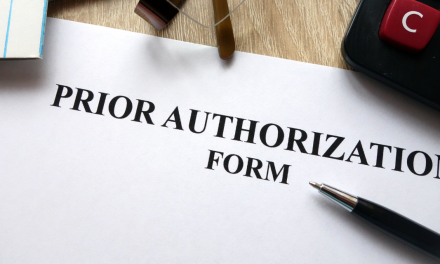
NEW Mandatory ABN Form to Take Effect January 1, 2021

The Centers for Medicare and Medicaid Services (CMS) has revised the Advanced Beneficiary Notice of Non-coverage (ABN) Form. The Office of Management and Budget (OMB) renews the ABN form every three years. The revised Advanced Beneficiary Notice of Non-coverage (ABN), Form CMS-R-131, is issued to the patient or client by providers, physicians, practitioners, and suppliers in situations where Medicare payment is expected to be denied. The revised ABN replaces the ABN Form that was last released in June 2017.
When a physician or supplier has a “genuine doubt” that a service will be covered, they are required to notify the patient of this fact. The ABN form is needed to be used for a statutorily covered service that may not be deemed to be medically necessary. In the Medicare program, chiropractic coverage is limited to coverage for spinal manipulation utilizing the hands or hand-held device. For all non-covered services, a standard letter informing the patient of the non-coverage or the ABN may be voluntarily used.
The newly revised ABN form may be used at this time; however, its use becomes mandatory on January 1, 2021 (Originally, August 31, 2020).
The newest version of the ABN and the instructions for use can be accessed here.
Although the ABN form itself has not changed appreciably, the instructions have changed regarding beneficiaries who are eligible for both Medicare and Medicaid. Patients who are dually enrolled in both Medicare and Medicaid, also known as dually eligible individuals, may be classified as a Qualified Medicare Beneficiary (QMB). A provider who is treating a QMB patient may not collect co-payments or deductibles for covered services. Dually eligible beneficiaries must be instructed to check Option Box 1 on the ABN for a claim to be submitted for Medicare adjudication.
Alteration of the wording in Option Box 1 for dually eligible beneficiaries would state the following:
□ OPTION 1. I want the (D) listed above. You may ask to be paid now, but I also want Medicare billed for an official decision on payment, which is sent to me on a Medicare Summary Notice (MSN). I understand that if Medicare doesn’t pay, I am responsible for payment, but I can appeal to Medicare by following the directions on the MSN.
These edits are required because the provider cannot bill the dually-eligible beneficiary when the ABN is furnished. Providers must refrain from charging the beneficiary, pending adjudication by both Medicare and Medicaid, considering federal law affecting coverage and billing of dually-eligible beneficiaries. If Medicare denies a claim where an ABN was needed to transfer financial liability to the beneficiary, the claim may be crossed over to Medicaid or submitted by the provider for adjudication based on State Medicaid coverage and payment policy. Medicaid will issue a Remittance Advice based on this determination.
Once both Medicare and Medicaid adjudicate the claim, providers may only charge the patient in the following circumstances:
- If the beneficiary has QMB coverage without full Medicaid coverage, the ABN could allow the provider to shift financial liability to the beneficiary per Medicare policy.
- If the beneficiary has full Medicaid coverage and Medicaid denies the claim (or will not pay because the provider does not participate in Medicaid), the ABN could allow the provider to shift financial liability to the beneficiary per Medicare policy, subject to any state laws that limit beneficiary liability.
The ABN form is a method for the provider to inform the patient of their liability for payment. It is only to be issued when there is genuine doubt that Medicare will cover the service. In chiropractic, since the only service eligible for reimbursement is spinal manipulation, the ABN form is mandatory only for spinal manipulation. One ABN form may cover a series of spinal manipulations that are not covered, such as in maintenance care, but the form is not to exceed one year in length.
You are advised to read the complete instruction manual for the form, but the changes that are most significant in addition to the QMB instructions, would include the following:
- The instructions altered the language to allow customizations. You may pre-populate specific fields such as the header, services, and reasons for services to be deemed not covered.
- Instructions were added mandating you not use the Medicare beneficiary identifier (MBI) as the patient identification number.
- Box D: In the instructions regarding repetitive or continuous non-covered care, the reference to section 50.7.1 (b) of the Medicare Claims Processing Manual, Chapter 30, was removed.
- Box G: Significant changes were made to the instructions for Option 1 about the QMB, as explained above.
- The reference to section 50.15.1 of the Medicare Claims Processing Manual, Chapter 30 was removed.
- The instructions for suppliers and providers not accepting assignment have been corrected to refer to the guidelines in “H. Additional Information” instead of “D. Additional Information.”
- Comprehensive instructions have been added for patients enrolled in both Medicare and Medicaid (dual enrollment)
The following statement was added at the end of the instructions (after the “Signature Box” instructions): “CMS will work with its contractors to ensure consistency when determining the validity of the ABN in general. In addition, contractors will provide ongoing education to notifiers as needed to ensure proper notice delivery. Notifiers should contact the appropriate CMS regional office if they believe that a contractor inappropriately invalidated an ABN.”
Again, keep in mind that although the form appears essentially unchanged, you must use the form CMS-R-131 (Exp. 06/30/2023). The ABN form is available in various languages, including Spanish.
The use of the new ABN form is mandatory. Although a patient may have just recently signed the 03/2020 version of the ABN form, if the circumstances are still applicable, you must have them resign the new ABN Form CMS-R-131 (Exp. 06/30/2023) by January 1, 2021, or the form will be deemed defective; therefore, it will not protect you.

















